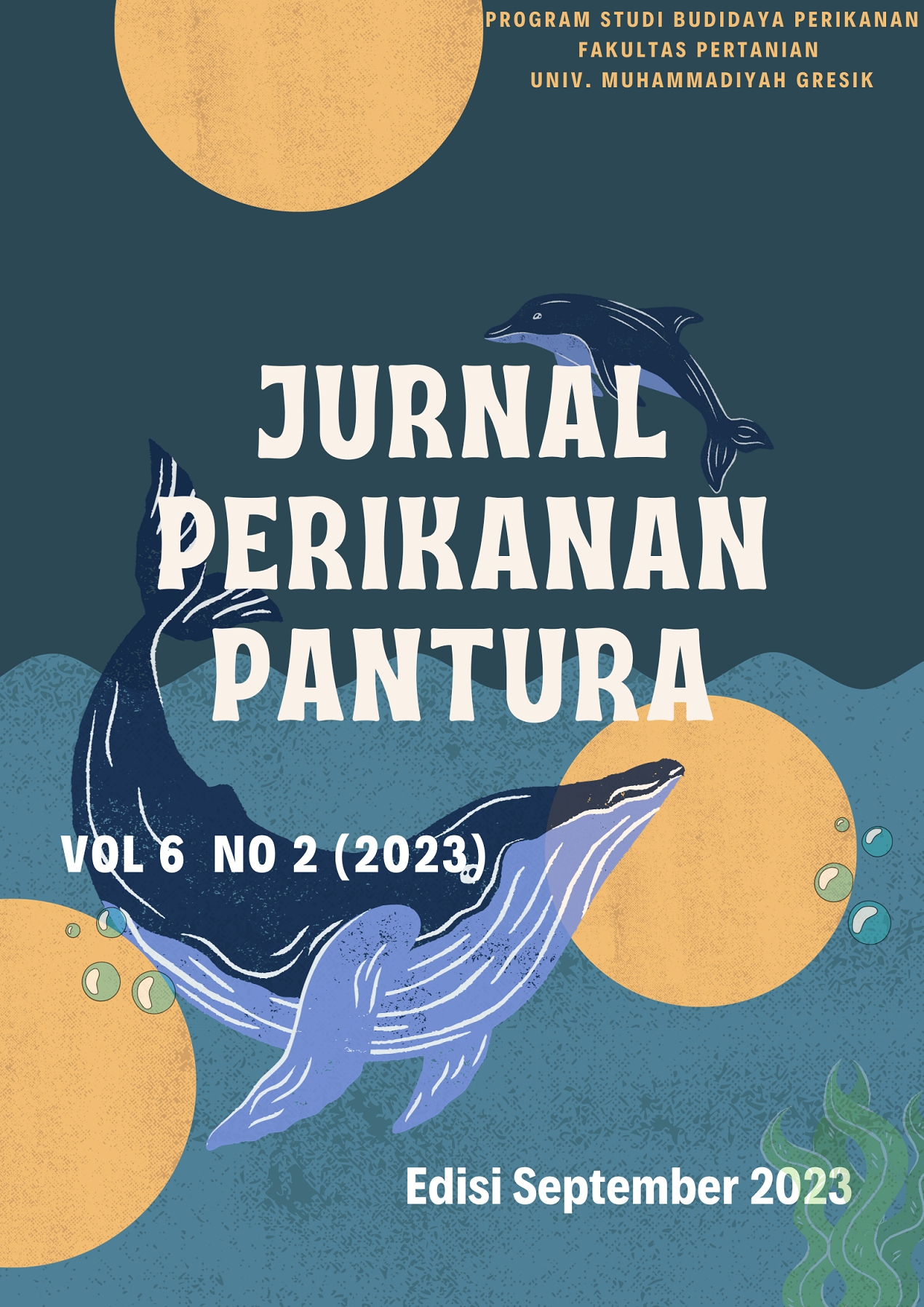IDENTIFICATION OF MACROZOOBENTOS IN THE UPSTREAM OF THE BRANTAS RIVER, BLITAR
DOI:
https://doi.org/10.30587/jpp.v6i2.5539Keywords:
Blitar, Brantas River, Macrozoobenthos, UpstreamAbstract
Macrozoobenthos are animals that settle at the bottom of the waters with limited movement and are sensitive to changes in water quality so that they can be used as bioindicators of water quality. Examples of macrozoobenthos are snails, crabs, clams, shellfish, and insect larvae. Not much research has been done on macrozoobenthos, especially in the upper reaches of the Brantas River, so it is necessary to identify macrozoobenthos which can be used as bio-indicators of pollution levels in the upper reaches of the Brantas River. Macrozoobenthos sampling was carried out by kicking and jabbing techniques. Samples that were ready were then observed with the help of a stereo microscope and identified up to the family level. 24 families of macrozoobenthos (Parathhelpusidae, Palaemonidae, Tubificidae, Dugesiidae, Erpobdellidae, Thiaridae, Physidae, Gomphidae, Hydropsychidae, Chironomidae, Perlidae, Scyomizidae, Amphipterygidae, Baetidae, Tipulidae), 6 orders (Lumbricullidae, Epheroptera, Diptera, Planaria, Coleoptera, Trichopteran), and 4 classes (Malacostraca, Citellata, Gastropods, and Insects).






